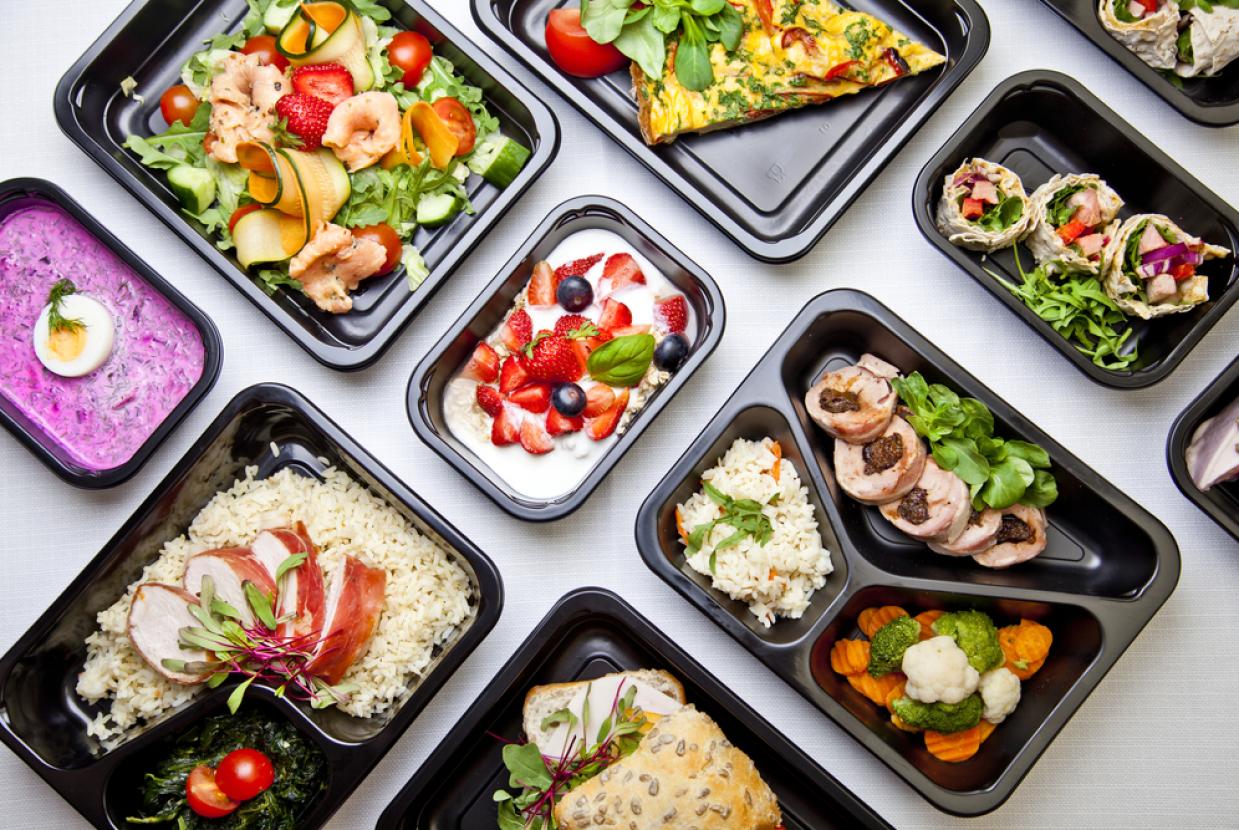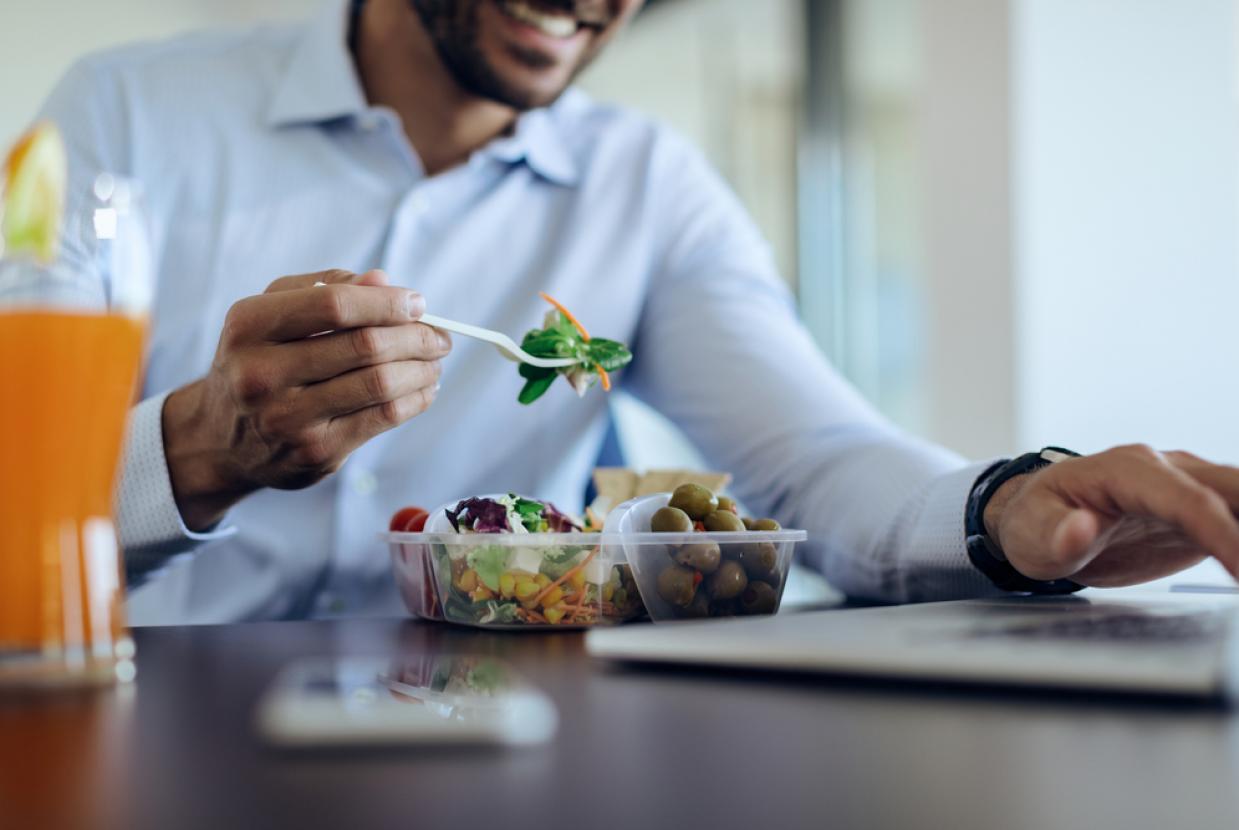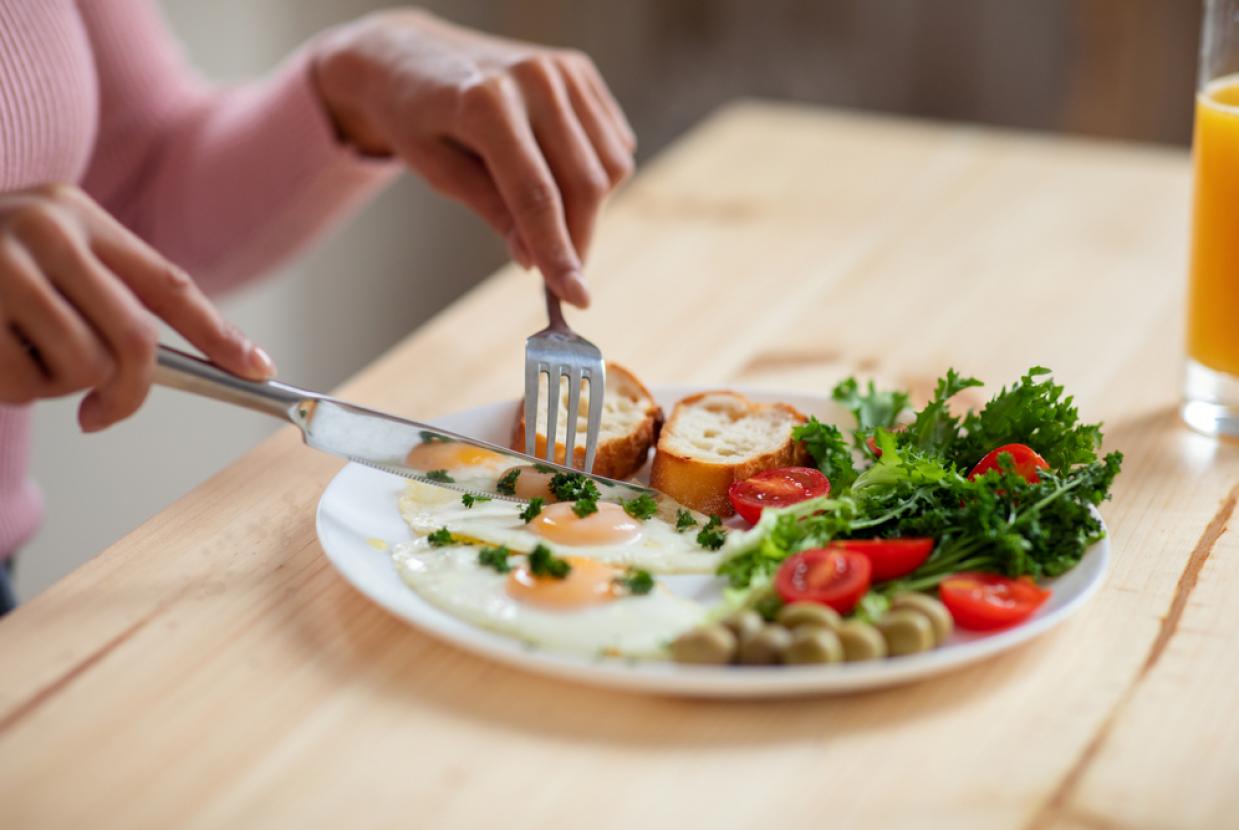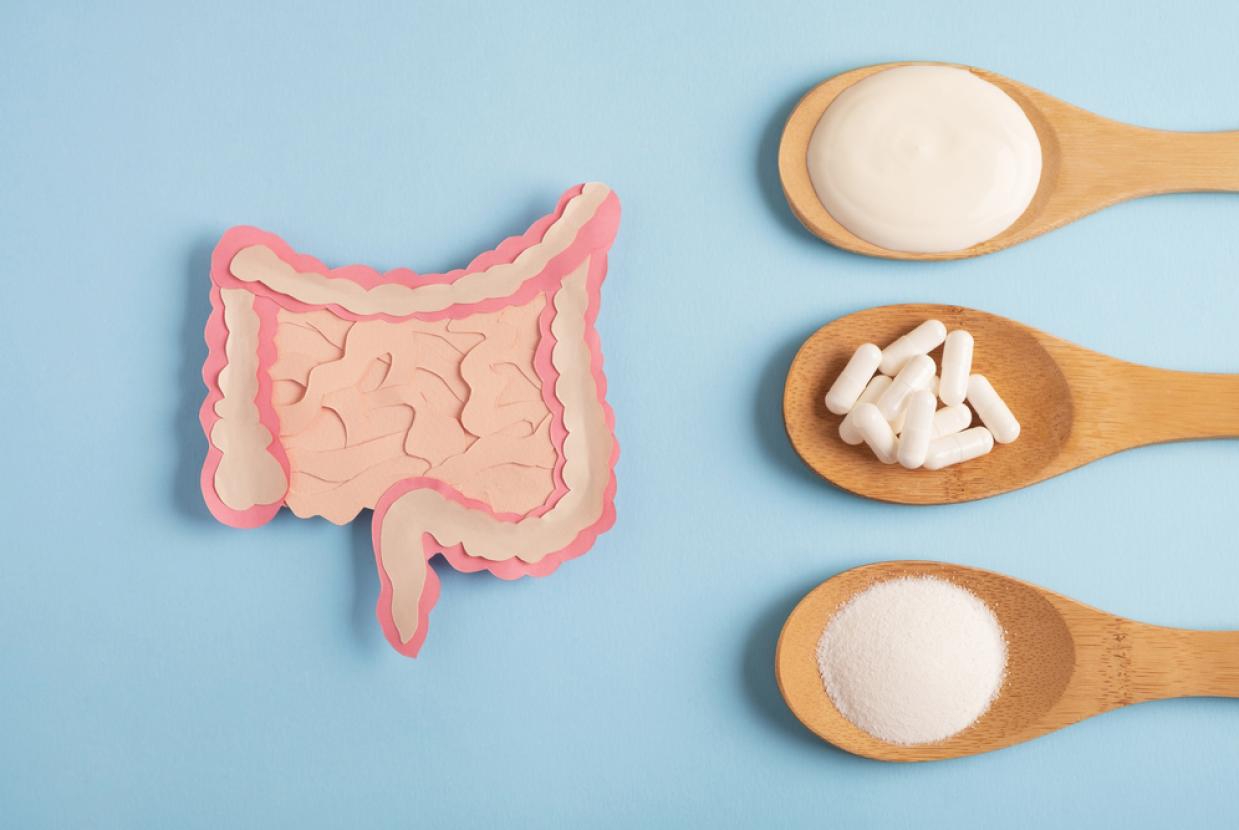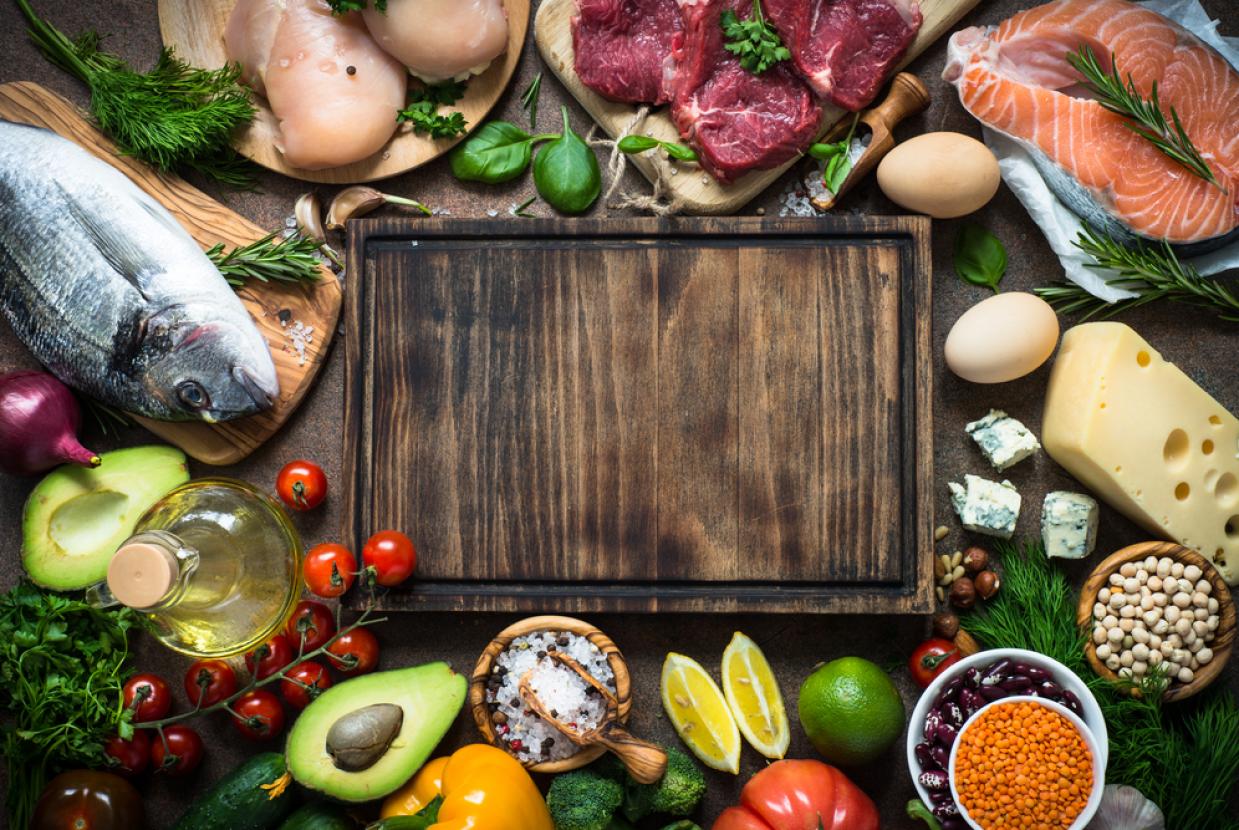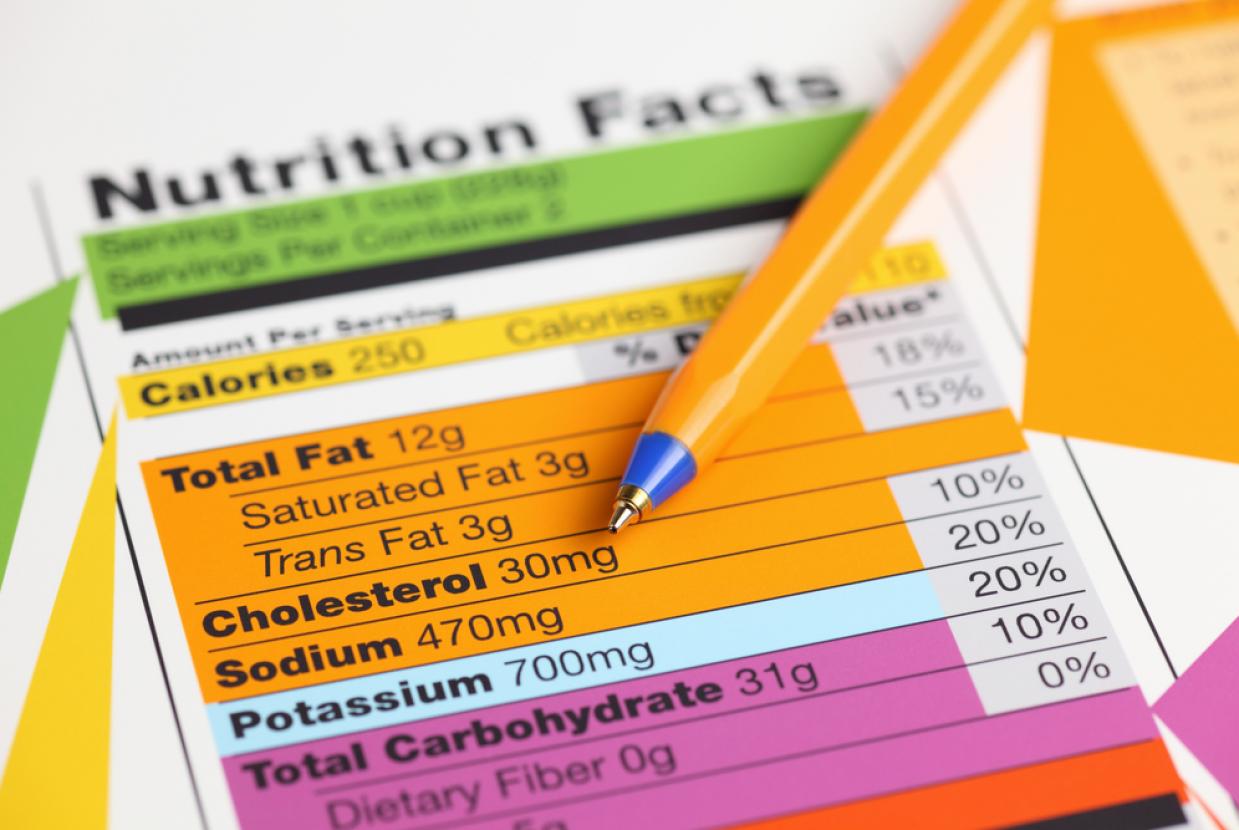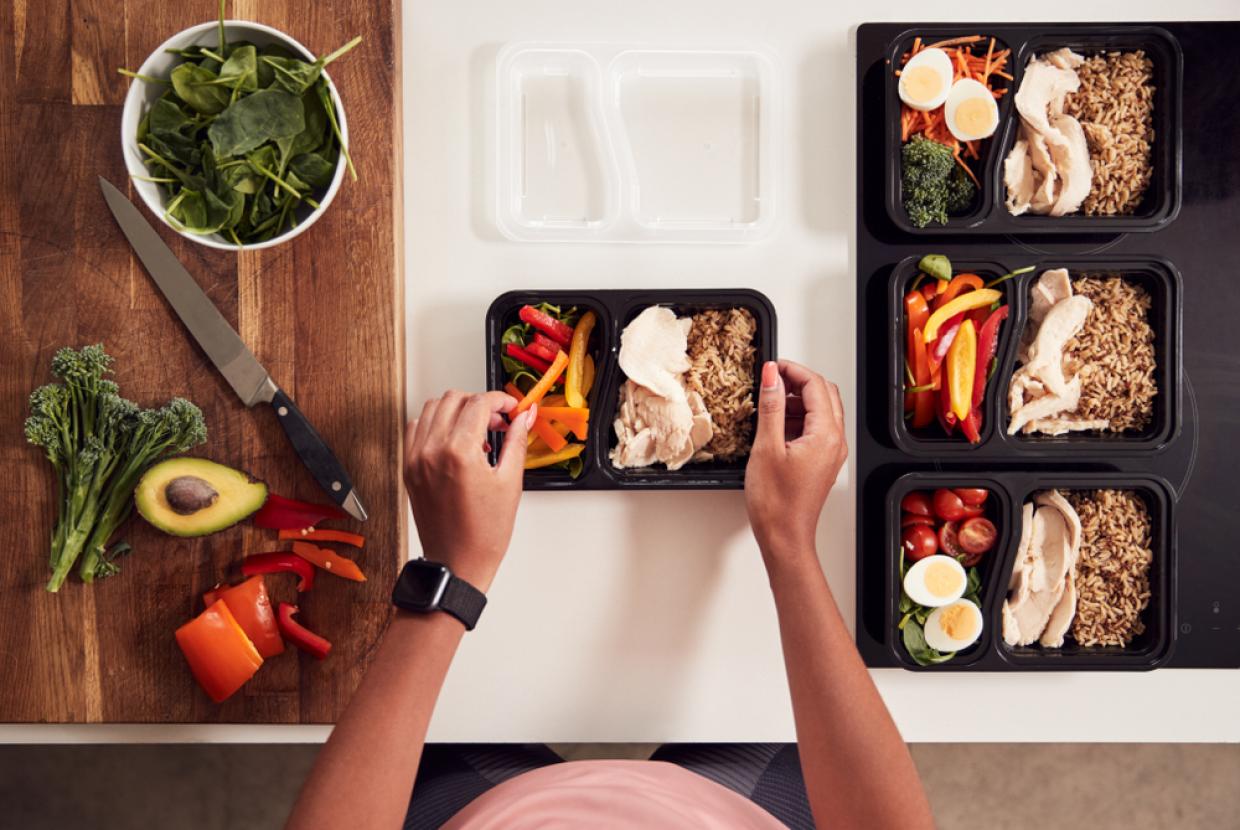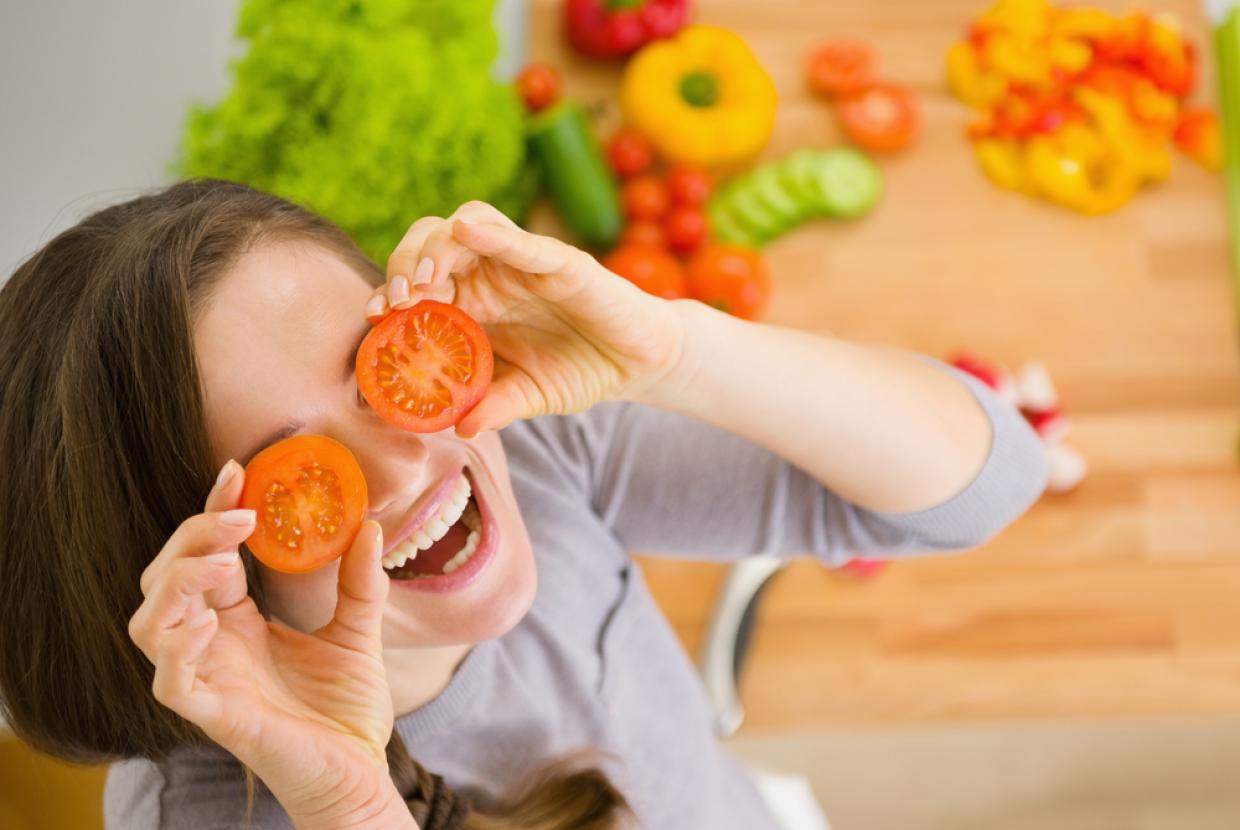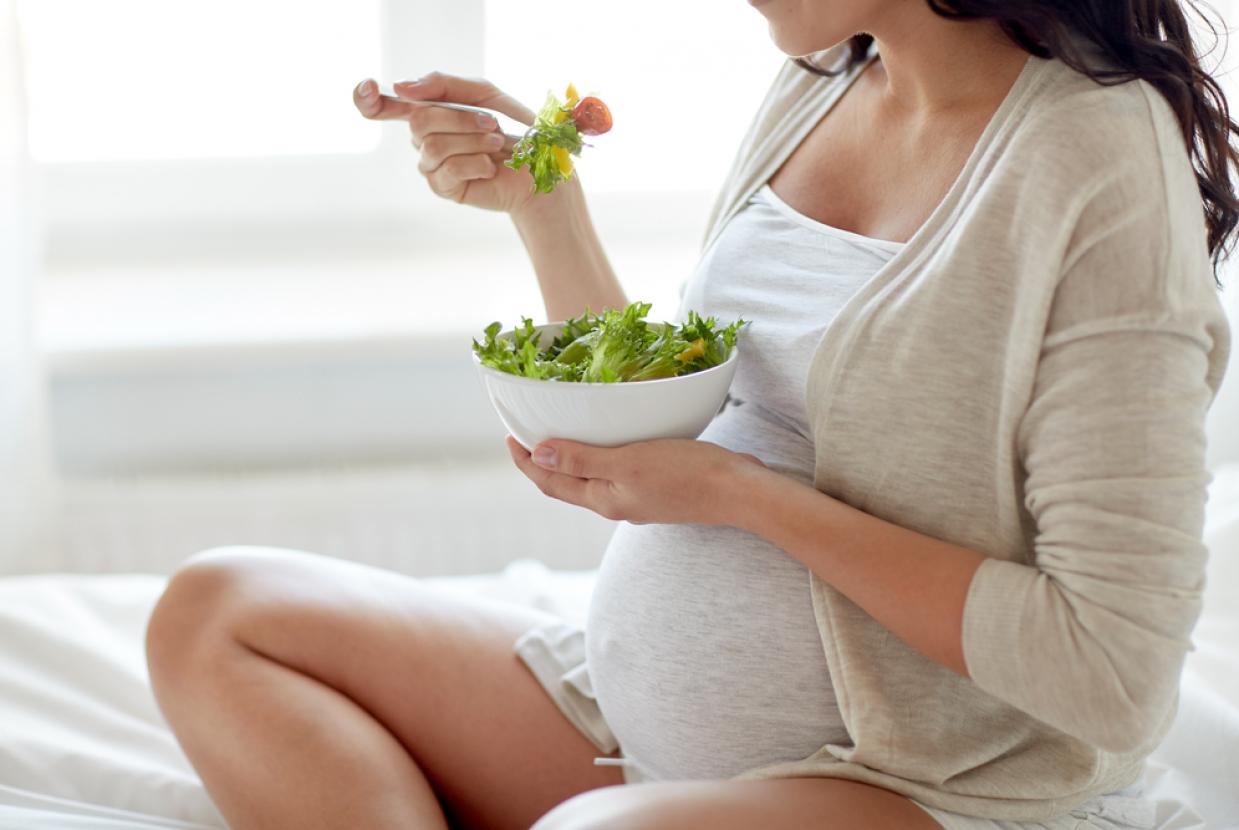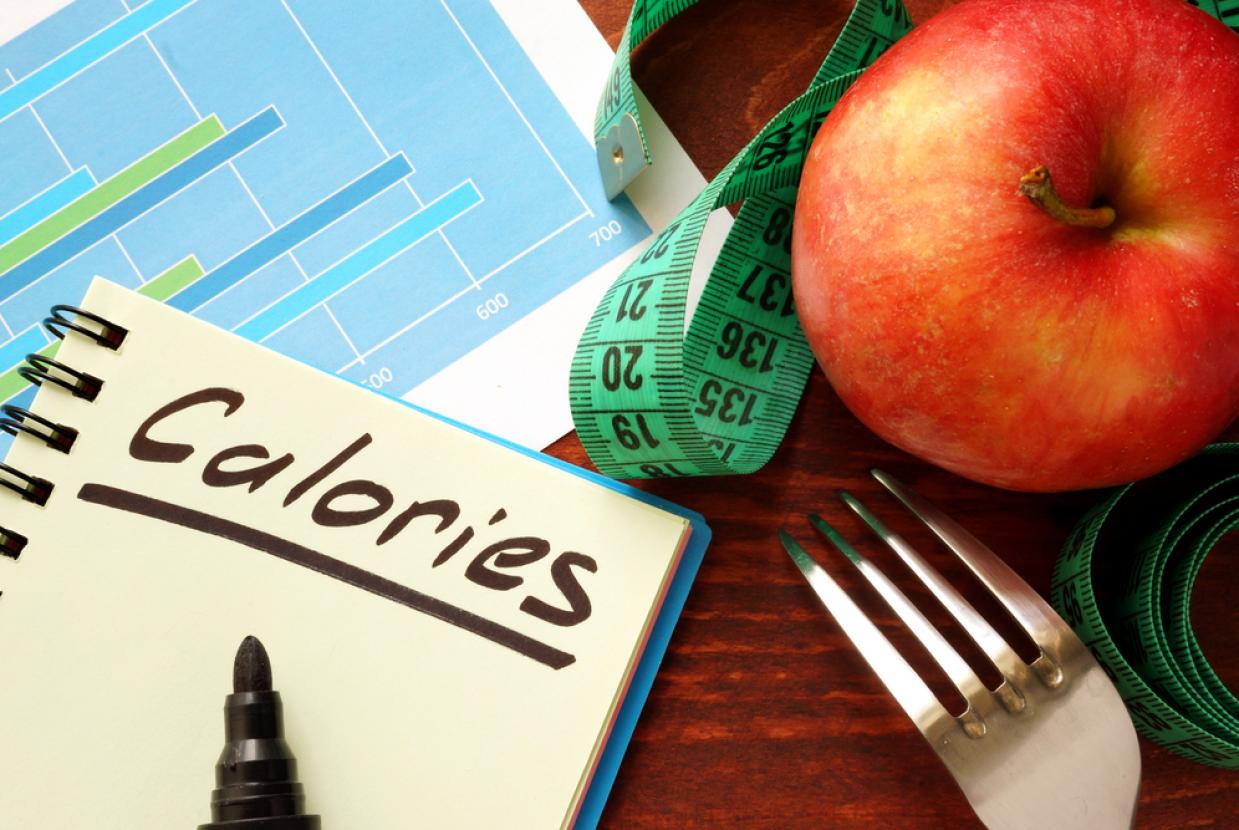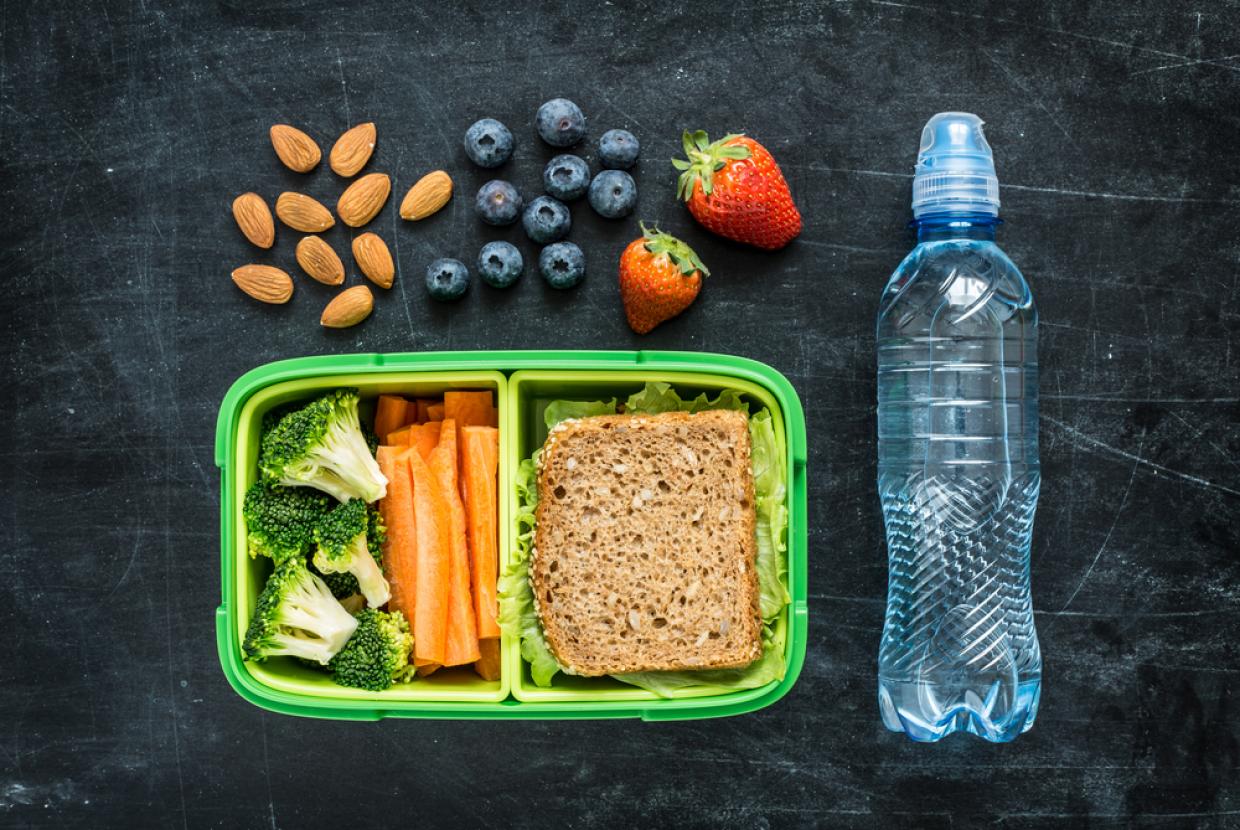Healthy Packed Lunches
Packed lunches can be easy, healthy and exciting. These tips can help you make a tasty and nutritious lunch and help you choose options from the main food groups.
Carbohydrates and fibre
One of the most important foods for a balanced diet is carbohydrates. Often people think carbohydrates are bad, but they should make up just over a third of the food you eat.
Carbohydrates provide a range of nutrients and provide us with the energy we need for all body functions. Without them in your diet, you might struggle with concentration, memory and performance. Carbohydrates also provide fibre, calcium, iron and B vitamins.
Including different food containing carbohydrate in the diet gives you lots of opportunities to eat fibre. Fibre helps your bowel function, gut and digestive system, and helps you to feel full after your lunch. Here are some easy ways to include carbohydrates in your lunches:
- Bread: Try keeping a selection of breads in the freezer for sandwiches and choose wholegrain options. Using different breads can make sandwiches more interesting. Why not dunk bread in soup a couple of times a week? Try pitta, bagels, seeded loaves, wholemeal chapati, roti, parathas and multigrain rolls.
- Potatoes: You could cook a couple of extra jacket potatoes at dinner time or the night before work. Pack them up with tasty toppings and reheat in the microwave. Remember the skin is the most fibrous part - and is tasty! Sweet potatoes are also full of healthy fibre and other nutrients.
- Pasta, rice, couscous: These are cheap and easy to prepare. Wholegrain varieties contain more fibre. Add these into soup or a salad, or stuff or fill cooked peppers, potatoes or aubergines. For example, couscous, leftover chopped veggies, meat or alternative, seeds and a lemony dressing make for great stuffed peppers.
- Beans and other pulses: Baked beans are a source of fibre, especially paired with jacket potatoes at lunch. Try adding other canned beans to your lunch box, they will give you more exciting lunches. Try Mexican chilli on a jacket potato, chickpeas in your salad, soups, lentils in curry, and hummus (chickpeas) in sandwiches.
- Nuts and seeds: Add these to your salads to bring texture, flavour, fibre and crunch to your lunch.
- Fruit: Having a whole piece of fruit at lunch is always a good idea. Try to buy different fruits every so often, to get variety and be more cost-effective by buying what's in season.
Fats
Including fats in your lunch will keep you satiated and keep you fuller for longer.
- In sandwiches: Using lots of butter, spread or mayonnaise on sandwiches can lead to a higher intake of saturated fat. Be mindful of how much you use and opt for less. Spread only one side of the sandwich or try something new like using hummus as an alternative.
- Oily fish e.g. salmon or mackerel, are great ways of including healthy fats. If you have a toaster at work, take your bread in your packed lunch, toast it there and add the fish on top. You can also try this with other toppings if you prefer warm meals at lunch.
- Salads and dressings: Making your own dressing means you get something you like and you know exactly how much fat you are using. Using a teaspoon of olive oil with vinegar and herbs is a healthy way to dress your salad. Salmon, avocado or hummus are delicious options to incorporate healthy fats into your salad.
Hydration
It is important to stay hydrated during the day. Current guidance is for women to drink 1.6 litres and men 2 litres of water per day. Remember your body may need more water in warm weather or when you do a lot of physical exercise. It is a good idea to bring a drinks bottle in your lunch box. Avoid soft or fizzy drinks that are high in added artificial sweeteners and sugars.
Choose from:
- plain water
- sparkling water
- milk (dairy: skimmed or semi-skimmed) or plant-based alternatives
- pure fruit juice or smoothie. One portion is 150ml and counts as one of your five-a-day - but it will only ever count one portion no matter how much you drink
- flasks of soup and hot drinks
- whilst vegetables and fruits are not a drink, they contribute to keeping you hydrated
Fruits and vegetables
It is important to eat five or more portions of fruit and vegetables every day. Try including a variety, as different fruits and vegetables will give you different types of antioxidants. Fruit and vegetables may reduce your risk of heart disease, stroke and some types of cancer. Here are some ideas to include them at lunch:
- Sandwiches: Add cucumber, lettuce, tomato or avocado
- Salads: Salad is a great way to eat more vegetables at lunchtime. Add a dressing, hummus, pieces of chicken, baked tofu, dried fruits, seeds, butter beans, cheese, cottage cheese, or cream cheese to make it exciting.
- Cooked vegetables: You could enjoy these in a soup in a flask
- Pack sliced raw vegetables e.g. carrot sticks, peppers, cucumber, cherry tomatoes. These can be great for dipping in hummus, guacamole or cottage cheese
- Fruit: Pack an apple, grapes, banana or kiwi fruit. Opt for dried fruits such as raisins or apricots. Tinned fruit in natural juice is a great option as the fruit is always perfectly ripe. Tie your lunchtime fruit in with plain yoghurt – it’s a healthier alternative to ready-made fruit yoghurt
Protein
Protein is essential for the growth and repair of our body. Here are some options for both animal and plant-based protein. Try to include beans, pulses, eggs, nuts, fish, dairy and lean meat in your lunchbox such as:
- Beans in salads and soups, lentil soups, dahl with roti bread or wholemeal wraps, hummus in salads or on sandwiches, peas in pasta/soup
- Greek style or plain yoghurt, peanut (or another nut) butter, quark or cottage cheese with fresh fruit and nuts
- Tuna, salmon or sardines seasoned with herbs or spices with bread or pasta, or with a salad containing cucumber, pepper, sweetcorn, tomato or greens
- Seasoned chicken, turkey or minced meat kebab paired with bread (wholemeal, wraps, chapati) or pasta, couscous or salad (cucumber, pepper, sweetcorn, tomato or greens).
- Add hard-boiled eggs to your lunchbox. Omelettes can be enjoyed cold in sandwiches, or try making egg fried rice to pack into your lunch box.
- Plant-based options aren’t necessarily a healthy choice. Mock meats contain protein but may be packed with salt, additives, and fat - check food labels.
Dairy
Milk and dairy products, such as cheese and yoghurt, are sources of protein and calcium. They can form part of a healthy, balanced pack lunch. Here are some ideas:
- Check the labels on yoghurts - sometimes they have lots of sugar, especially if you choose low-fat yoghurt. Plain yoghurt with fresh fruit is a healthier option. Rice pudding is also a tasty and easily-packed lunch dessert
- Cheese in soups, sandwiches, salads (green salads or pasta/rice salads) is a good way to add protein and dairy
- Vary cheeses often in your lunch. Try soft cheeses like Brie or camembert, goat milk cheese, or soft, blue-veined cheese, such as Roquefort.
Fancy something more?
Don't make certain foods "off-limits", just try and make healthier choices more often. If you opt for high sugar, salt or fat snacks, keep it to once or twice a week and aim for about 100 calories worth of energy from these foods.
Opting for crackers, fruit and veggie sticks more often, rather than crisps, chocolate, and pastries (e.g. sausage rolls/pasties) is a great way to be more mindful of fat in the diet.
Remember to keep your lunch cool and safe
- Use a cool bag, an ice pack or freeze a carton of juice and place it with food to keep cool
- Keep lunch in the fridge until morning if you make it the night before
- Don’t store your lunch next to a radiator or in direct sunlight
Top tips
- Lots of foods can be used to make a packed lunch varied and tasty
- Try and make healthier choices more often and limit snacks high in sugar, salt or fat
- There is a lot of overlap - for example - including fruit in your lunchbox also has fibre, including bread in your lunchbox not only adds fibre but protein too
- Don’t feel pressured to include foods from every group in every meal, but aim for a balance across the day or week
- Remember to include something from each of the main food groups, as well as water, and you’ll not only have a meal to look forward to, but a lunchbox packed full of all the right nutrients to fuel your body for the rest of the day


